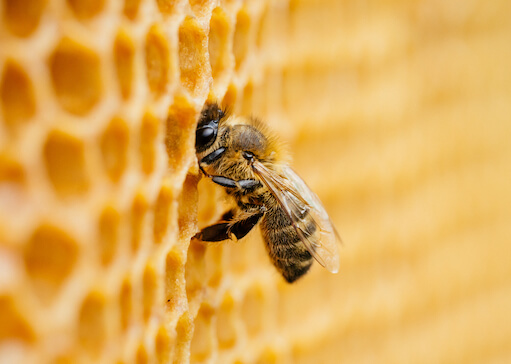Véto-pharma Supports the Men and Women who Work for Animal Health
Founded in 1982, Véto-pharma is a French pharmaceutical laboratory specializing in animal health.
Our teams of experts work daily to develop, produce, and market innovative solutions to support professionals in the sector. With its own research center dedicated to bees, Véto-pharma places innovation at the heart of its activity.
Our Activities

We provide effective, innovative, and high-quality solutions to support the beekeeping industry.

We are the preferred CDMO partner for many companies in the veterinary sector.
The Latest Blog News

Selective trap for Asian hornet shows promising results
Selective trap for Asian hornet control by Véto-pharma—eco-friendly, affordable, and effective in protecting biodiversity and beekeeping.

Honey bee colony starvation during the season
This article helps you understand and anticipate the phenomenon of seasonal famine in bees (also known as the “nectar dearth”), which drives them to consume the honey stored in supers.

Swarm Management in Spring
Practical swarm management tips for spring: how to detect, prevent, or support swarming based on your beekeeping goals.

Discover Véto-pharma’s Beekeeping Tips and Tricks
The Véto-pharma apiary team shares its tips and tricks for better daily hive management.

Tropilaelaps is lying in wait – Can Amitraz efficiently reduce infestations?
The Asian-native Tropilaelaps mite is spreading and threatening Apis mellifera hives. We’re testing Amitraz as a potential treatment.

Managing space in honey bee colonies and adding honey supers in spring
Learn when and how to add honey supers in spring to prevent swarming and boost honey production through smart hive space management.
Our Latest Publications

Discover this exclusive beekeeping webinar focused on one of the most pressing challenges in beekeeping: Varroa destructor management.

Read our new 20-page guide on “Integrated Varroa Mite Management throughout the Seasons,” co-written with Dr. Gérald Therville, a french veterinarian with a specialized diploma in Beekeeping.

This document offers an overview to enhance readers’ understanding on Amitraz resistance and clarify common misconceptions.

In this video, Frank from Mann Lake discusses with commercial beekeeper Billy Fussell his successful use of Amiflex.

Need some help on how to apply or use Amiflex? Watch this video from FoxHound Bee Company

In this 1 minute video, discover how to use VespaCatch Select, specifically designed to combat the Asian hornet.







